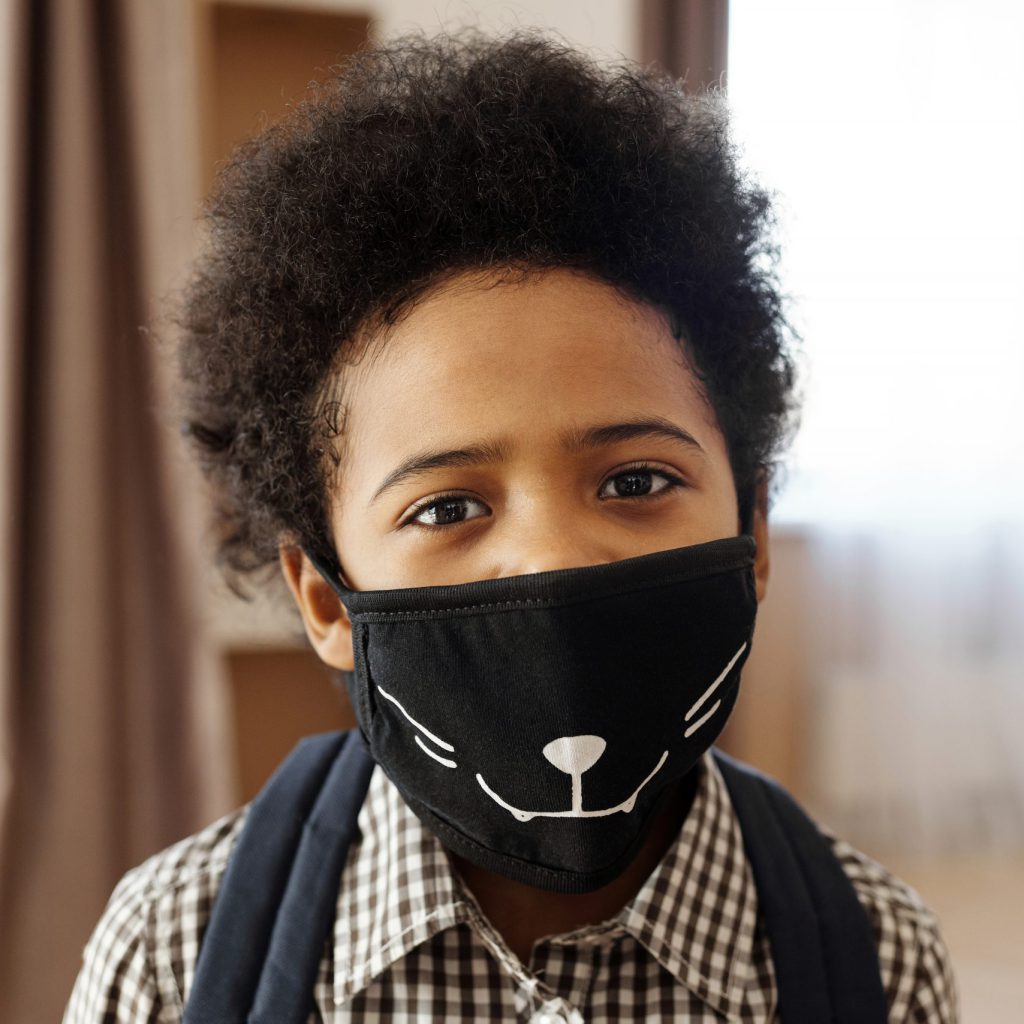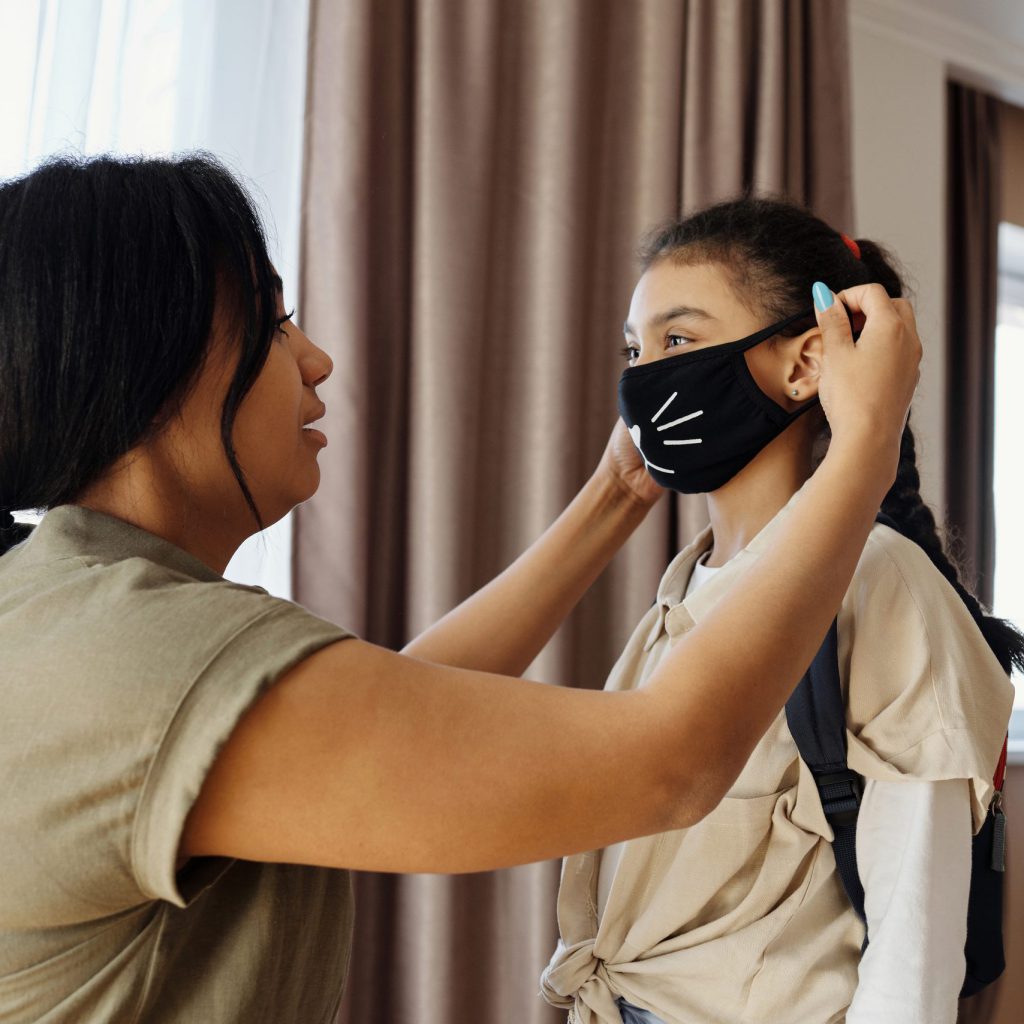by Rickie Kostiner, MA, Graduate Intern

Wearing a mask every day can be a daunting task and something that takes getting used to, especially for young children. As our children navigate their unique way through this challenging time of the COVID-19 pandemic, how can we, as caregivers and parents, set the stage for our children to be successful? Mask wearing is a necessary activity that we will have to endure for the foreseeable future. Utilizing some of the tools within the Tuesday’s Child framework can help to ease that experience.
Antecedent Planning
Antecedent planning is important with mask wearing. Set up the environment for your child to be successful. If your child has never worn a mask before, they may not be ready to wear a mask for hours on end. That is why it is important to practice wearing a mask before it is necessary to wear a mask.
Start with introducing the mask to your child. Dr. Bethany Vibert from Child Mind Institute recommends finding a “low-stress time to introduce them to their mask. Have it around the house if you can. Perhaps they can pick out a mask that they find and have fun with it— maybe their favorite color or character. Start with small goals like holding it over their mouth for just 5 seconds at a time and give your child a reward for doing that successfully. From there you build up to longer periods of time.”
Modeling
Practice with them and allow your child to see you wearing your mask. Modeling a behavior will allow your child to see that wearing the mask can be done safely and successfully. Approach mask wearing as an experiment for you and your child to try out together. Say, “Henry, let’s do an experiment together and try to wear our masks for five minutes!” Use a digital timer, and allow your child to push the button to start the timer. This small but deliberate job can give your child a sense of control over their mask wearing experience.
Praise

Be sure to praise heavily any amount of time that your child is wearing the mask. Praise can be anything from, “Kaiden, you are doing a great job wearing your mask safely!” to verbal following like “look at Kaiden wearing a mask!”
Acknowledge Concerns
Acknowledge the child’s difficulty and worry over wearing the mask. For example:
Child: “I feel like I can’t breathe with my mask on!”
Parent: “I understand that. Feeling like you can’t breathe is a scary feeling! Let’s look at your mask together and find the places where air can come in and then we can learn about the new feeling of breathing with your mask on.”
Discuss the safety protocols with your child and mask wearing. Ideas for questions to answer are; how is wearing a mask keeping you safe? How is wearing a mask keeping others safe? Then, answer your child’s questions, and allow them to be curious about this new experience. Allow your child to feel any emotion they need to with the boundary that they are safe and the behavior of wearing a mask is necessary!
Using When-Then
After you have discussed why mask wearing is important and practiced how to do it, it’s now time for your child to put on their mask and get out the door! Now is a great time to utilize the Tuesday’s Child language model that focuses on the child’s behavior. Below is an example of a potential situation:
Parent: Okay, Sophie, it is time to put on your mask.
Sophie: No! I don’t want to!
Parent: Remember, when you put on your mask, then you can earn a skittle!
Sophie: ok! I will do it. I want to earn a skittle
Parent: Good job following directions, Sophie!
The use of concise and direct language will keep your child focused on your expectations. After the behavior is completed no matter how difficult it was to get there, praise your child heavily for completing the behavior. Be consistent and predictable with your behavior sequence around mask wearing so your child knows what to expect. Over time, the experience and transition into mask wearing will become easier because you and your child will develop a routine to support it successfully.
Need More Support?
These are suggestions as to how you can provide a safe space for your child to wear their mask. If you are currently working with a trusted provider such as an occupational therapist or mental health therapist, reach out to them for support in implementing these techniques. If you are not currently working with anyone and need additional support, you can reach out to Tuesday’s Child.
Rickie Kostiner
MA Urban Education Policy, Brown University
Master’s Candidate in Clinical Counseling, Northwestern University
Behavioral Intervention Graduate Intern, Tuesday’s Child
REFERENCES
Vibert, B. (2020, August 14). How can I get my child with autism used to wearing a mask?

